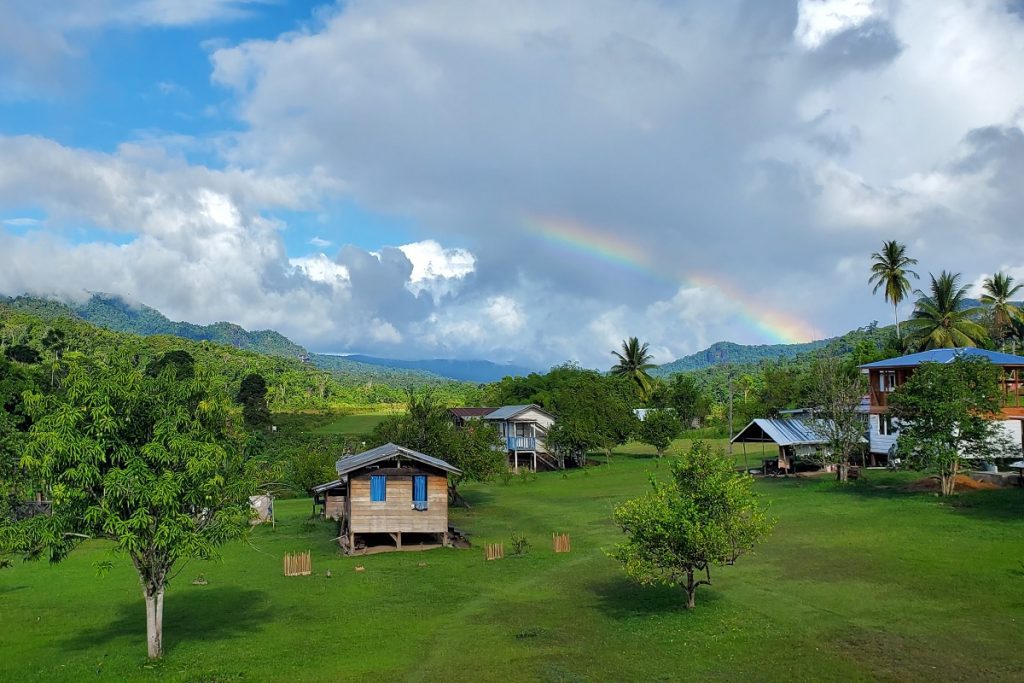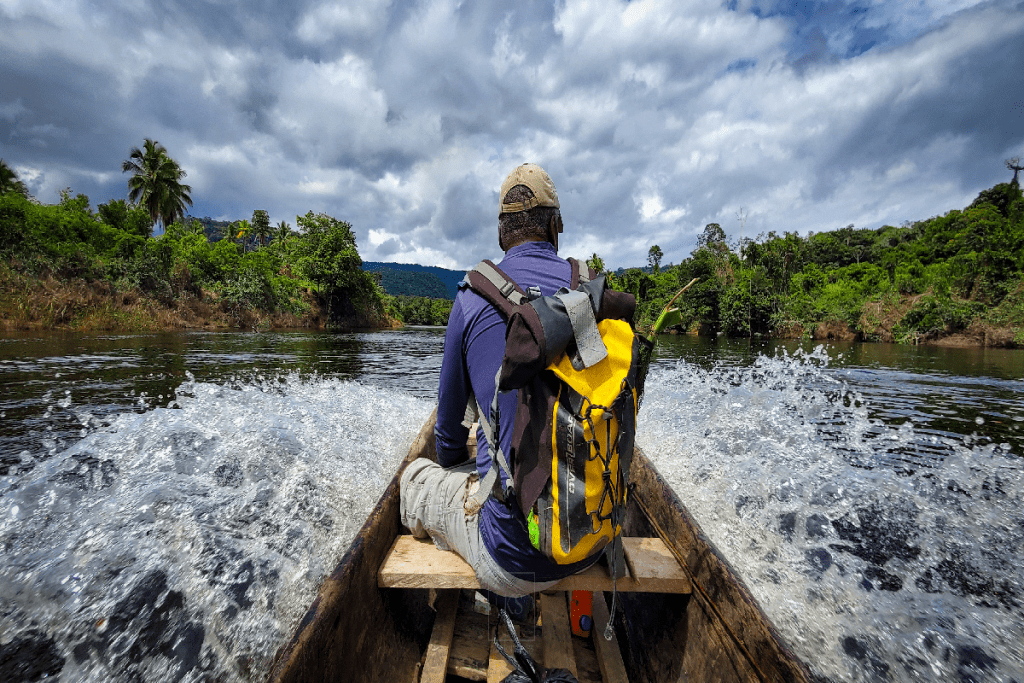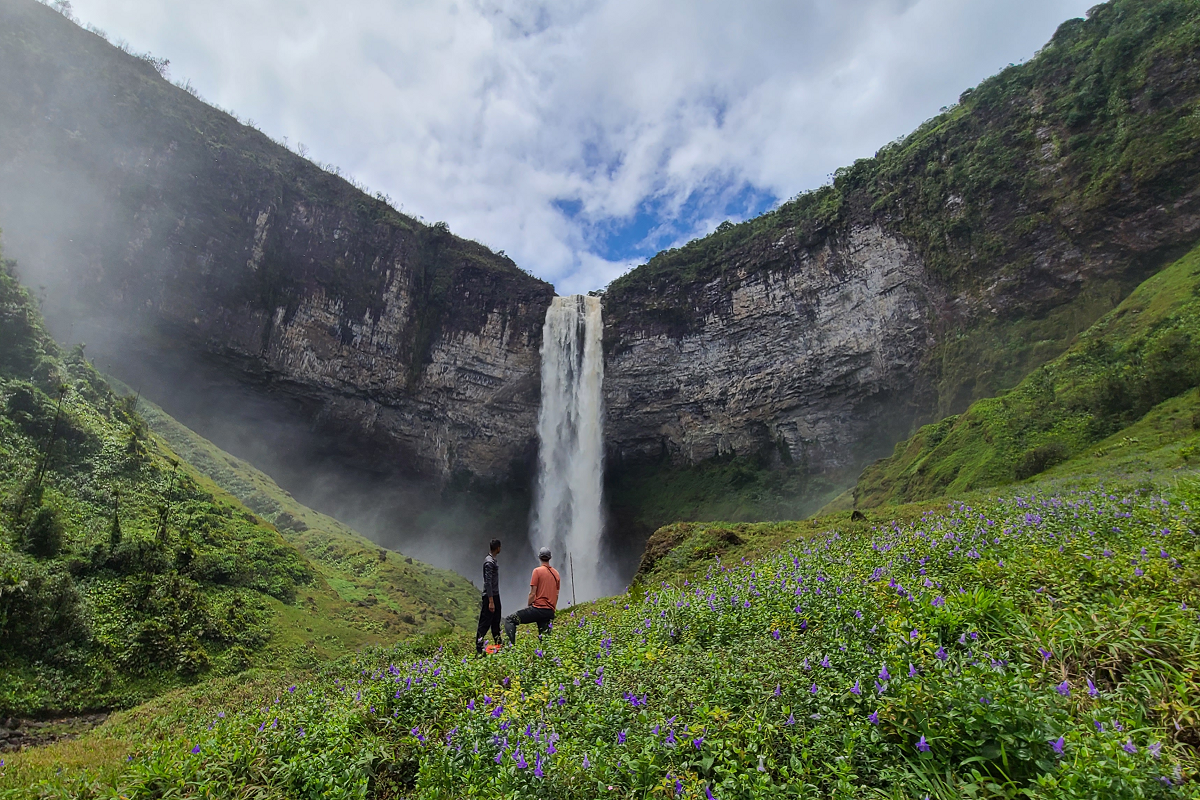Skift Take
It's one thing to create off-the-beaten-track adventures, but just how sustainable these multi-day experiences are needs careful consideration from the remote locals. After all, they're expected to drip-feed off those offerings by showcasing their everyday existence.
South America’s Guyana, one of the most densely forested areas in the world, has piqued the interest of U.S. adventure seekers with its remote expedition appeal.
At a time when local populations are getting a larger and long-awaited say around the world in charting tourism plans, rising demand for Guyana’s hard-to-reach natural attractions is offering Indigenous communities the ability to choose the adventure-trekking path of ecotourism to build the economy. The alternative: a deforested, oil-slicked road to unsustainable hell.
In essence, ecotourism sees tourists opt for nature-based experiences, preferably in small groups, with the intention to observe and appreciate nature, along with the traditional cultures who live in that particular area.
In Guyana, a country rich in gold and oil, its Indigenous people have looked to eco tours as business models to stem any negative impact on its environment.
With tourism only generating some $215 million a year or less than 3 percent of Guyana’s total gross domestic product in 2021 (2 percent shy of its pre-pandemic level), it certainly pales in comparison to the more profitable commodities of oil and agriculture, with its unwanted side-effect of deforestation.
The discovery of oil off Guyana’s coast in recent years has turned the small Caribbean country into an emerging oil powerhouse, with an estimated 11 billion barrels of recoverable oil discovered so far. The International Monetary Fund says it is one of the highest levels per capita worldwide.
But the troubled waters of neighboring Venezuela, largely a blueprint of how not to approach sustainability, swayed Indigenous communities of Guyana to explore the economic viability of ecotourism.
Guyana occupies a land mass 73,000 square miles (slightly smaller than the state of Idaho), with a population of just 750,000 people.
The tiny village of Paruima had been thinking about creating a multi-day experience for a while. However, concerns about the negative social impact saw the older generation remain skeptical — keeping in mind this is the only settlement of Pemon Amerindians, one of nine indigenous groups in Guyana. However, they were forced to take notice when the younger community started leaving.
Films crews scouting for film locations in Guyana gave Paruima the perfect test case to see if tourism was viable for its 1,000 or so inhabitants, according to Carla Vantull, general manager of Wilderness Explorer.
Guyana Indigenous communities are governed by a village council, with a chief, also known as a Toshao, elected every two years. Therefore, there had to be a consensus when voting to bring in the tourism model.
The production of a six-part documentary unfolded successfully, and they found it could be a better solution to extractive industries.
“They didn’t want to cut down their trees or do mining. Tourism was the answer to bring economic standing and benefits to their community,” said Vantull.
‘Nothing Like The Rest of South America‘
Guyana’s natural beauty and adventure trekking are typical fodder for somebody like adventure travel blogger, Tom Grond.
He said Paruima is nothing like the rest of South America, having visited 147 countries over the past decade, including most of the continent.
“Mentally, it’s a hard trip. You have one day where you walk seven hours straight through the jungle.”
He added that digging into the community’s customs, as they all spoke English, was remarkable during his six-day trek experience.
He shared how some locals told him they’ve chosen tourism over illegal oil smuggling across the river, which would make them “slaves to the system.” Moreover, it carried heavy pollution risks, with life-threatening explosions.
“The tribe has lived there in this pristine area for generations and generations. Nature is very precious to them.”

Wilderness Explorers, operating in Guyana for over two decades, launched the six-day Guyana Highlands Trekking Adventure in November, from $3,245 per person. The tour starts and ends with an overnight in Georgetown. Grond was part of a hosted group to test the product in October this year, before its launch.
Wilderness Explorers are the dominant multi-day operator in the region, with only single-day tour options coming up in an online search. Neither Intrepid Travel or G-Adventures offered any similar multi-day experience. Although, Intrepid recently announced it would be launching 100 new Indigenous Tourism experiences 2023, in a bid to “expand perspectives, fight racial discrimination and support first people communities” through a more diverse offering.
When competing with destinations like Peru and Brazil, Grond questioned the trekking tour’s high price points.
“It’s a tour where you sleep in a hammock in the jungle. It’s not like you sleep in a nice place. It’s agreed suffering,” said Grond.
Discussing the trek’s cost Vantull said, “It’s like you’re renting out a national park, and it’s just you and your group. You don’t have to compete with thousands of other people to get that Instagram photo.”
In this regard, the impact of overtourism on Peru’s Machu Pichu, or the bustling beaches of Brazil’s Rio quickly spring to mind – but would this product appeal to the same crowd?
Vantull believes this complete solitude redefines what the five-star experience is all about.
‘Guests to Guyana Buy the Multiplier Effect’
This latest “hard adventure” product is designed so travelers can get up close and personal with Guyana’s exquisite waterfalls, nature and remote communities.
“It puts local people at the centre of the tour offering, as guests buy the multiplier effect,” she said.
“We helped shape their tourism offering and draft visitor guidelines respectful of their culture and tradition.’
As practicing Seventh Day Adventists, they are very strict in terms of worshipping on a Saturday — which means itineraries can only start on a Sunday and end on a Friday. Also, no alcohol is offered on this village tour because of the impact it can have on the community.
In hindsight, Vantull said the buy-in has been much quicker with Paruima compared to Guyana’s other communities.
This kind of product usually takes three to four years to launch, with the community agreement and feedback to refine the process key to its success.

Showcase Culture in a Respectful and Meaningful Way
“In everything, there are positive and negative impacts,” said Calio Miguel Nunez Elliman, born and raised in Paruima. He has been leading expeditions in this remote region for over 30 years.
“When I started to work at the age of 21, there was no established tourism activity, only some researchers coming to study the plants and mammals.”
Elliman, now 56, said without guiding that his daily means of living involved gardening, hunting and fishing. He added that changing to a modern way of life has challenged his village.
Elliman agreed that the trips are expensive, but he’s satisfied with earning $350 per tour. The problem for him is that they’re just too few of them.
“I get to meet people of different nationalities and ensure they have fruitful experiences. It’s the best part of my job. But that’s once in a blue moon. I’d much prefer if these trips were at least once a week.”
A huge cost factor for these adventure tours remains transport, said Kamrul Baksh, director of Guyana Tourism Authority, with each transfer anywhere from $200 to $400.
With a focus on a community-driven model, he said, “the only thing that the communities are not producing is fuel.”
Baksh said the tourism authority’s focus is to grow direct bookings for local tour operators through its marketing efforts, with a direct booking website also in the pipeline.
It goes without saying, this would spur competitive pricing and increase the frequency and number of trekking groups.
The Daily Newsletter
Our daily coverage of the global travel industry. Written by editors and analysts from across Skift’s brands.
Have a confidential tip for Skift? Get in touch
Tags: adventure travel, ecotourism, Guyana, south america, tour operators, Travel Experiences
Photo credit: Paruima, the only Arecuna settlement in Guyana, offers a challenging but thrilling adventure trek experience. Wilderness Explorers / Waterfall trekking
